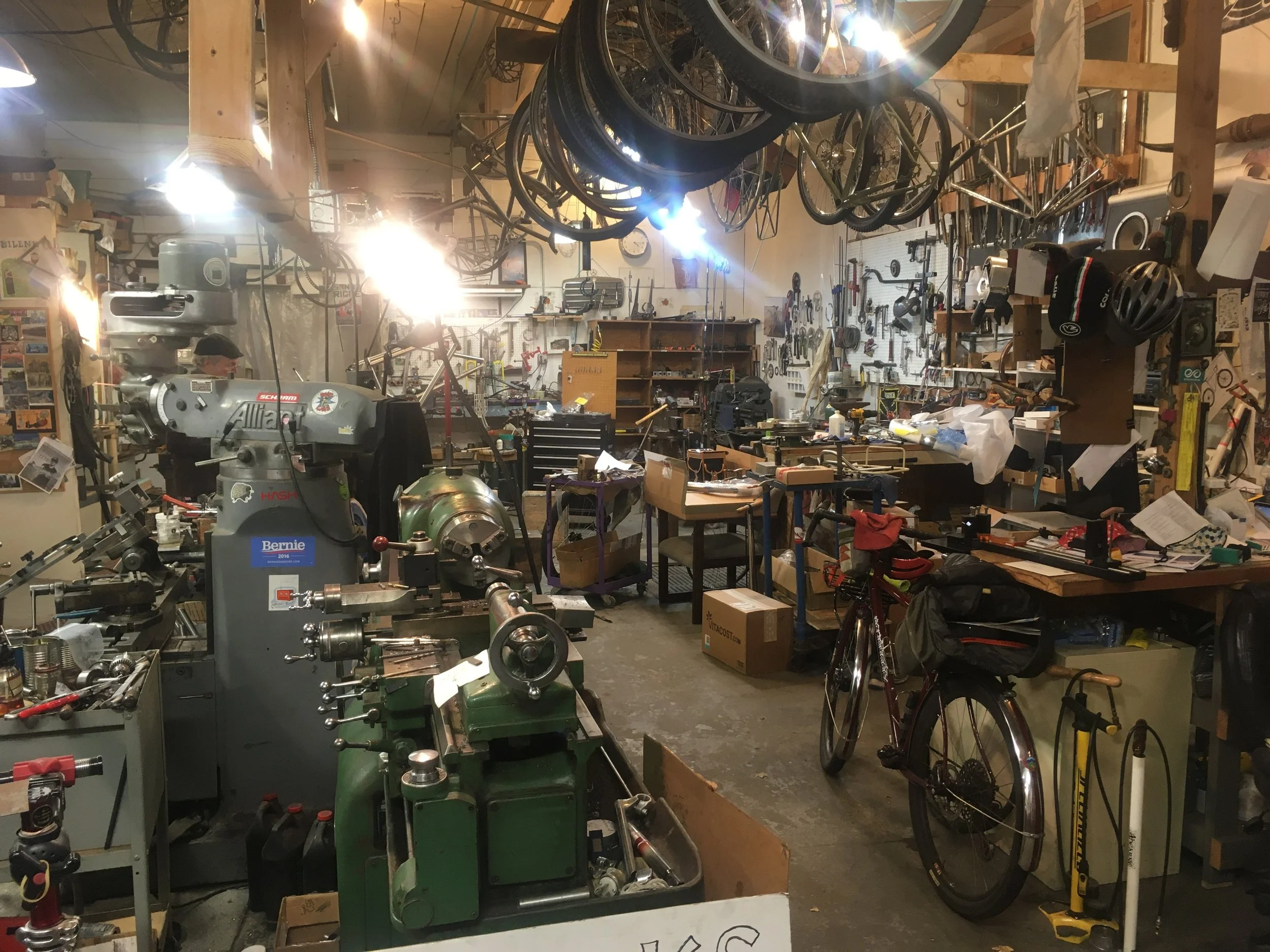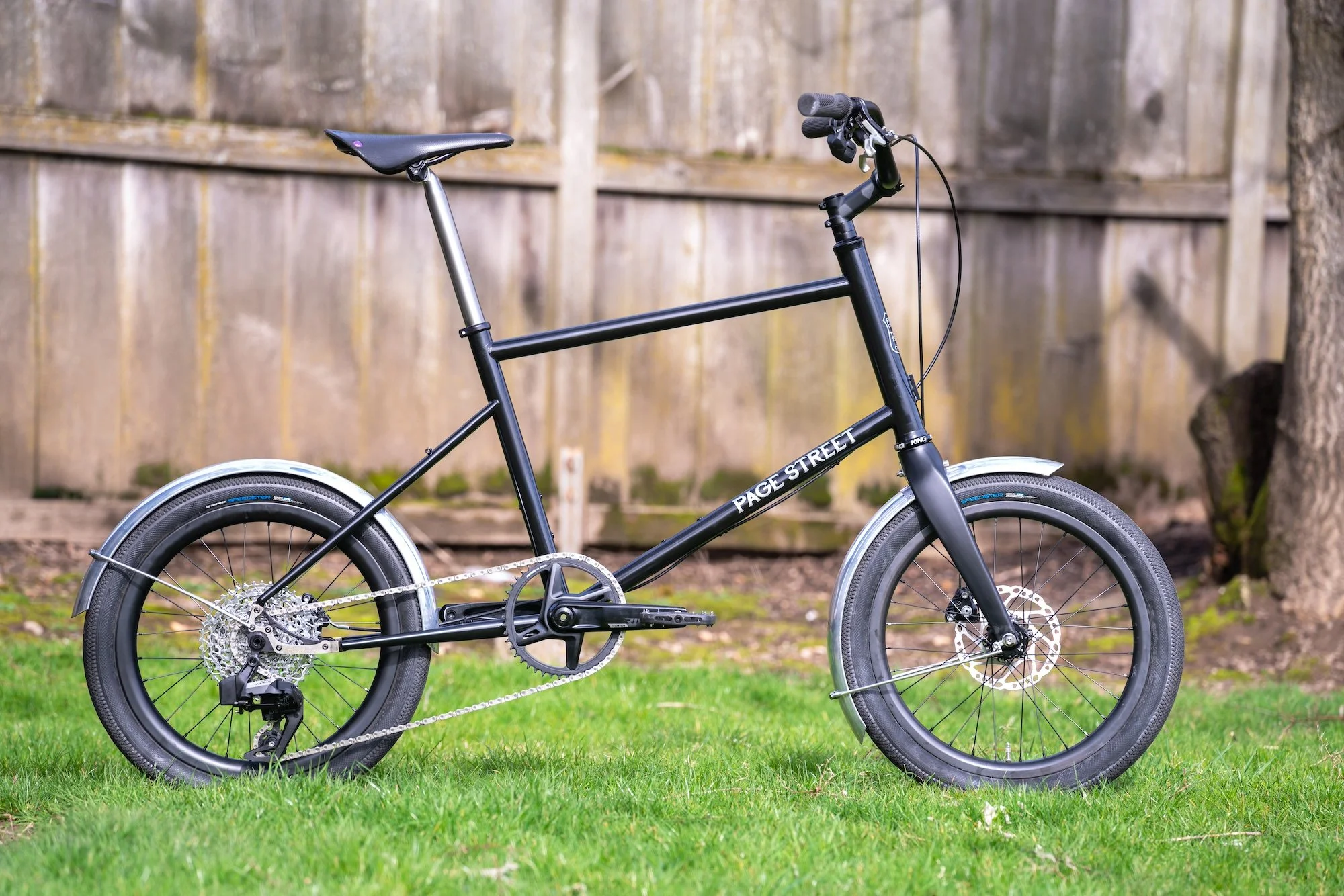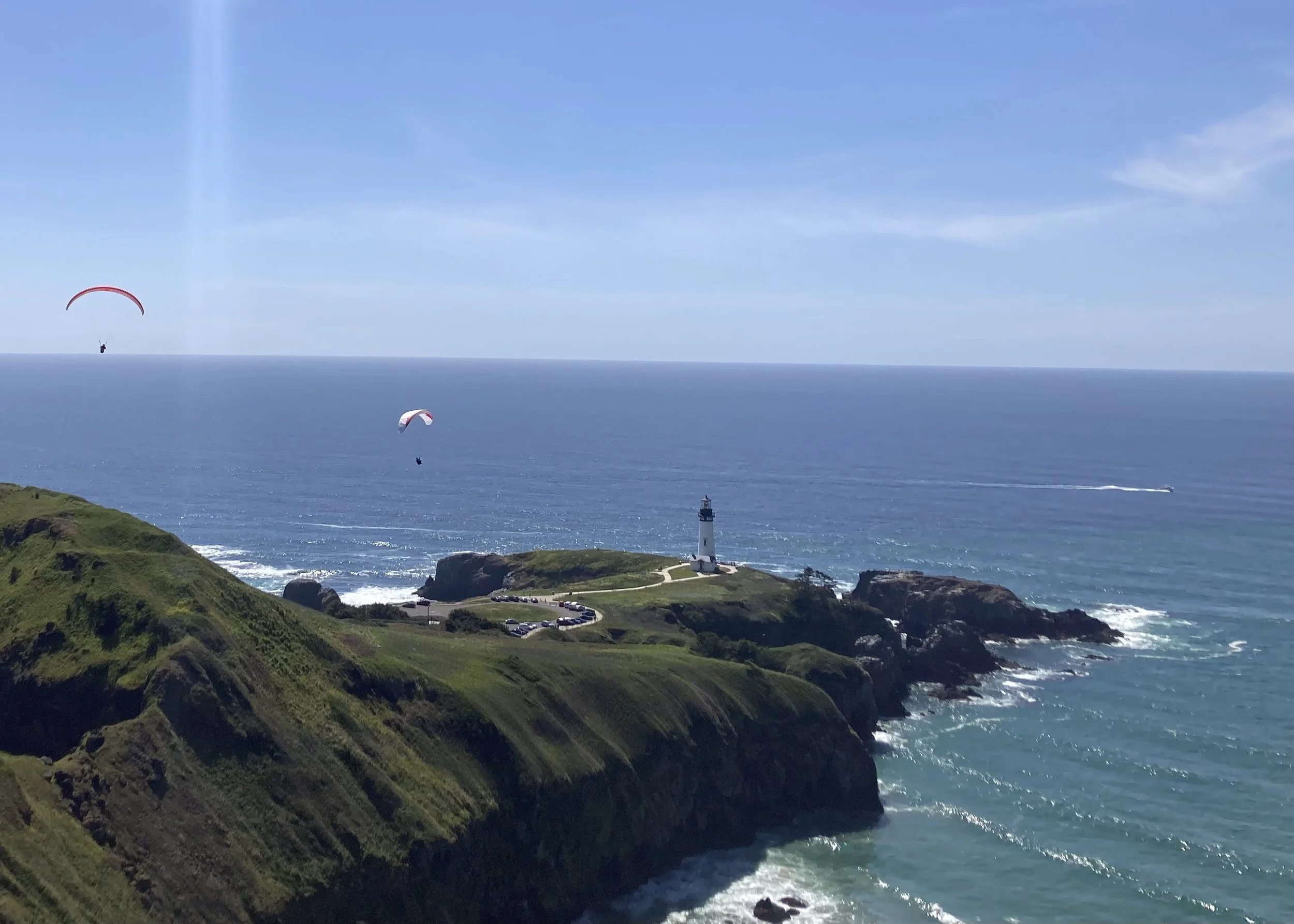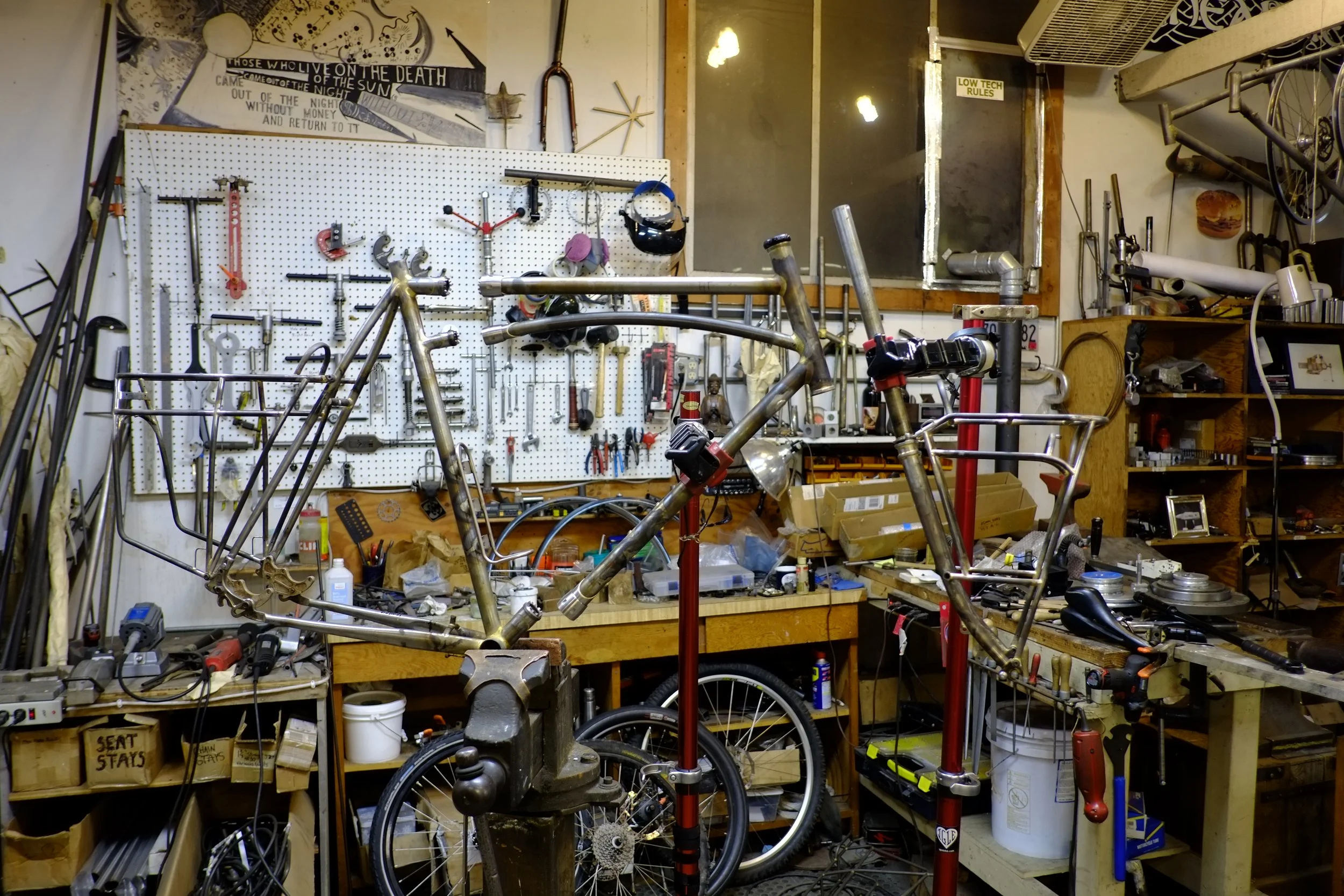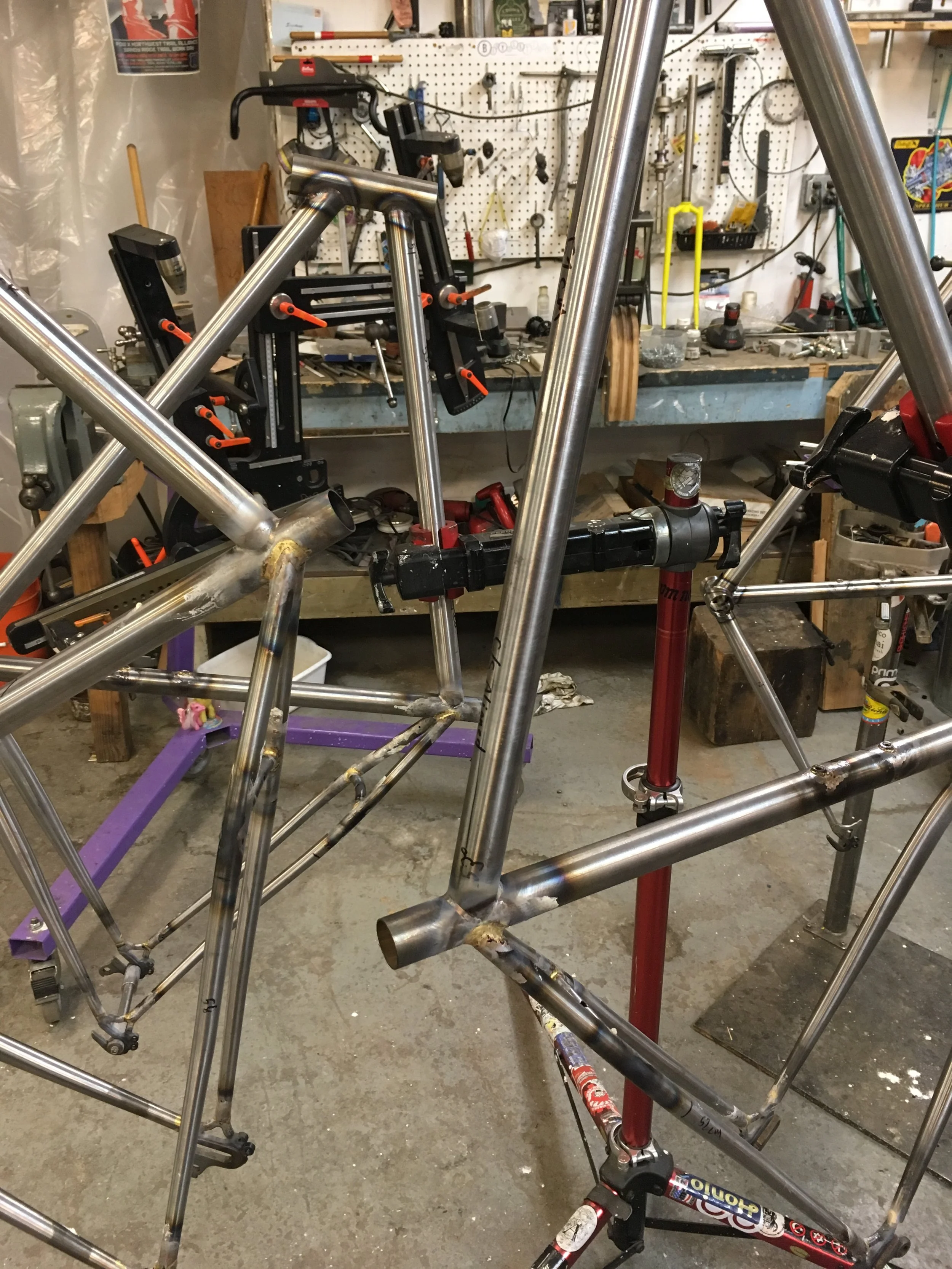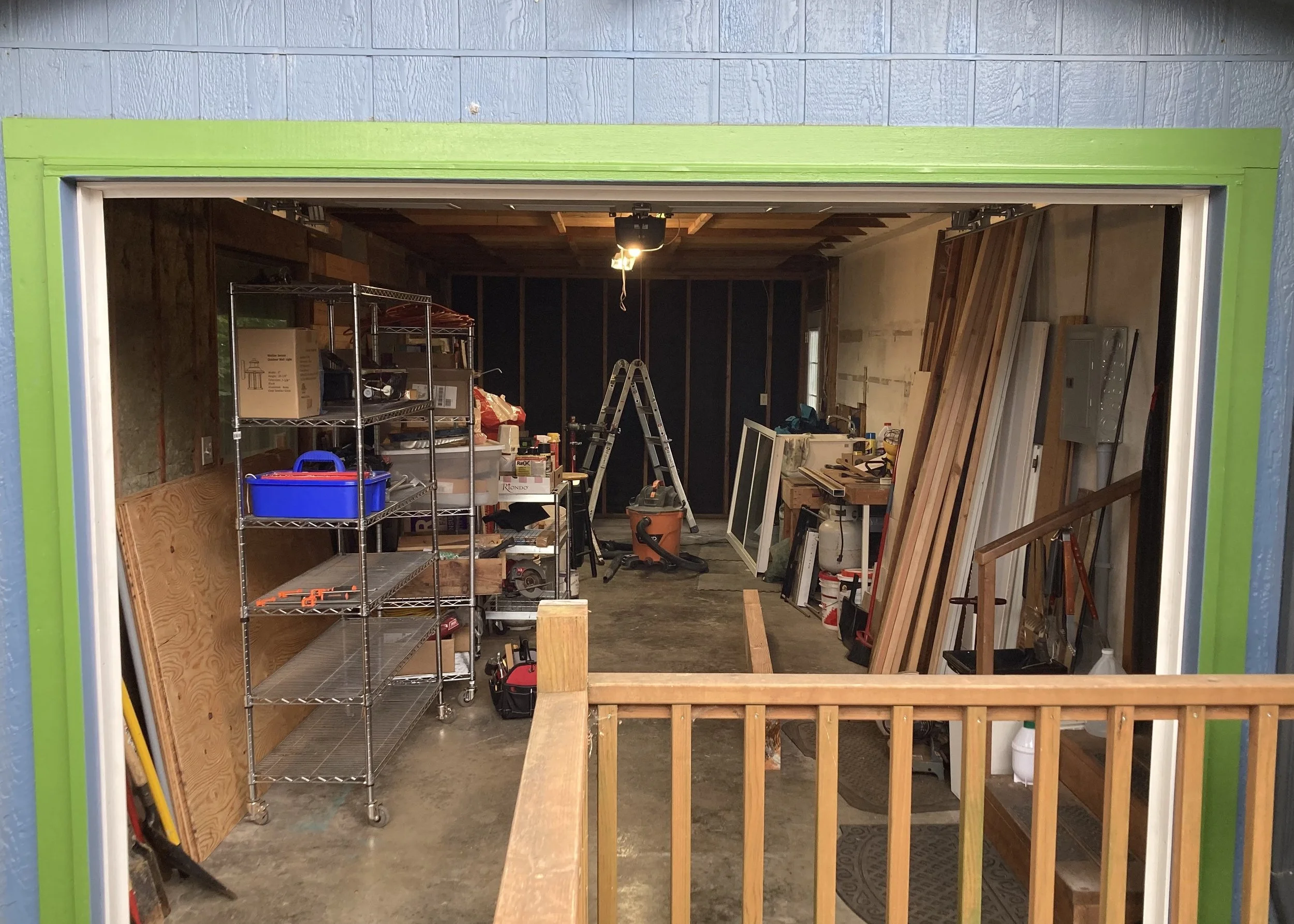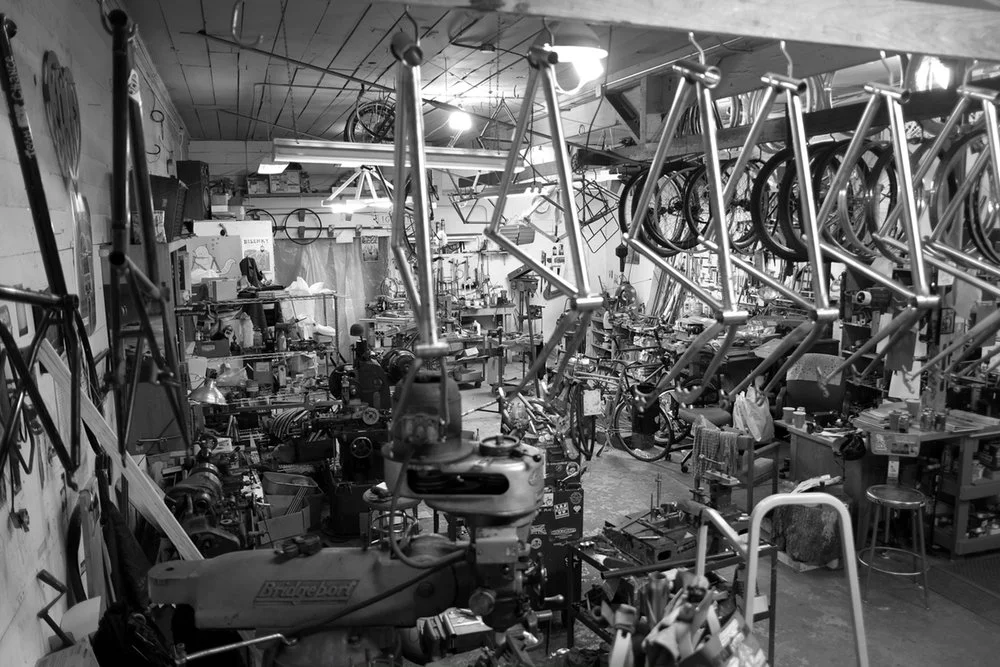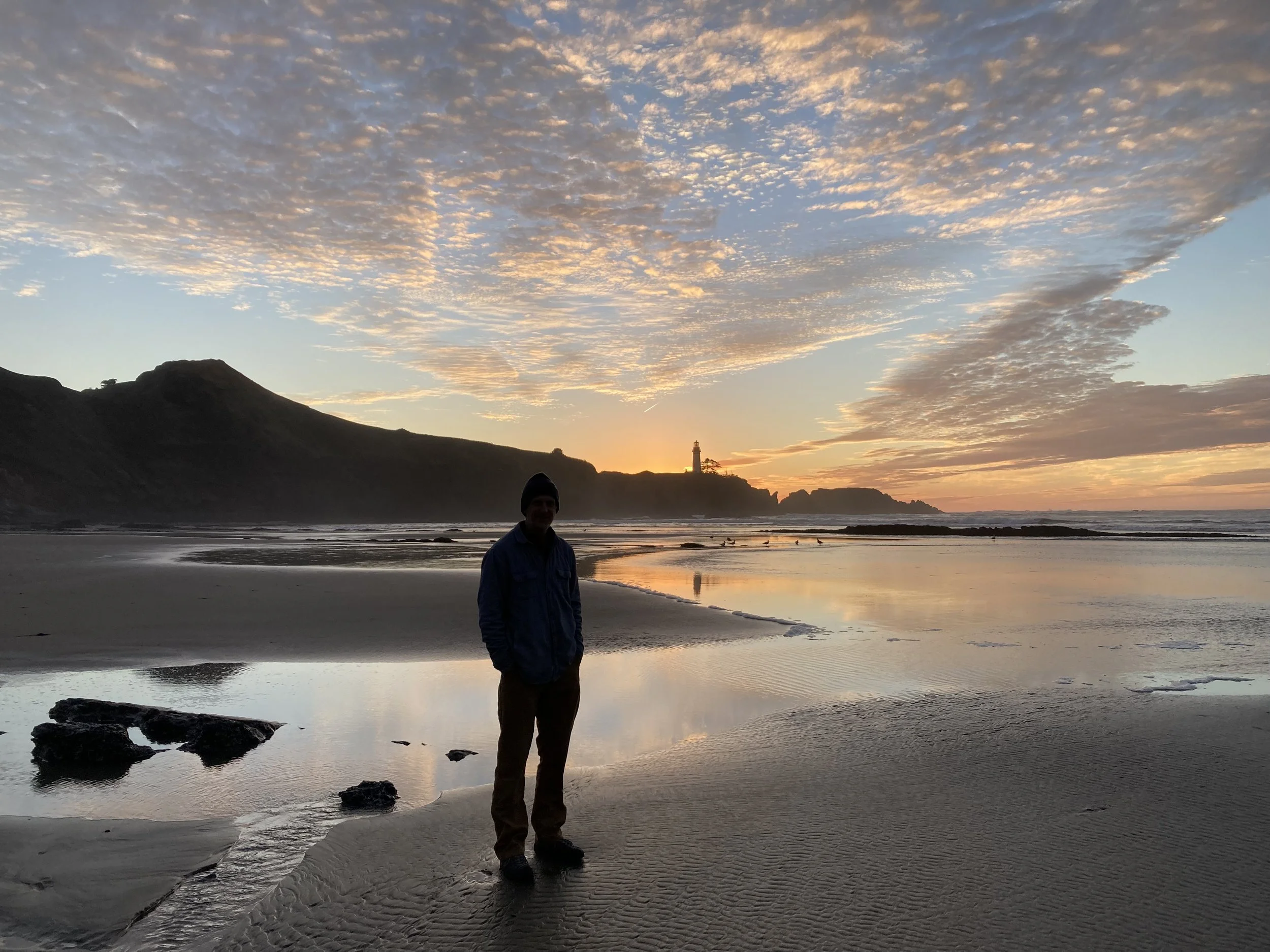The workshop on Page Street has been my base of operations for more than eighteen years. Like all good things must do, it is coming to an end. I’ll be moving my workshop this coming September. Here are some things you ought to know, and a few of my thoughts about what’s coming.
18 Years of Accumulation
First, so we’re clear: Both bicycle brands I lead — Ahearne Cycles and Page Street Cycles — will continue as they have for the past many years. With Ahearne Cycles, I will continue making fully custom, one-off bicycles and racks, and Page Street Cycles will stay focused on production models that are collaboratively built.
For those of you who already have deposits in, there will be some delays while I make the transition, but the plan is to unbuild from my current shop, to rebuild into the new shop and be fully up and running by November/December.
As a side note, more information on progress with the Viajero travel bike is coming soon. This bike is unique enough that before offering it to people I first want to make sure everything is dialed in. There is a lot happening in general and I’m devoting what time and resources I can to the project. It’s amazing to see how much interest there’s been. A lot of people get it — these bikes satisfy the itch any cyclist has when you travel and want a bike with you. The Viajero is not necessarily for bike-centric trips and bike tours, but to some degree it could be. I picture it being most useful for trips where you land in a place for a few days or a couple of weeks and want a bike with you to explore a town or commute on. It’s designed to be stable, quick handling, and ride like a “regular” bike, while being easy to break down and pack in a suitcase-sized travel case. It’s not a folding bike. The focus has been on ride quality first, then weight and packability. The goal is for it to take maybe 10-20 minutes to set up or break down while using minimal tools and with only basic technical knowledge. We all know there’s no better way of checking out a new location than by wandering the streets on a bicycle. The Viajero is another tool for the quiver that does its job in the best way possible. It’s portable and fun to ride. Thank you for being patient while I get the bike design dialed in and work through a move. I’ll be opening up for pre-orders as soon as the time is right.
My new neighborhood lighthouse
Next relevant piece of information regards where I’m moving to. A few of you know I own a house in Newport, on the Oregon Coast. The house is nothing fancy, but it has a garage that is large enough to house a small operation like mine. This is where my workshop is headed. It will be a significant reduction in square footage — from almost 3000 sq. ft. to a little over 300 — but the most salient point here is that I own it (well…the bank technically owns it, but you get what I’m saying).
Less space means consolidation — of tools, of “stuff” in general. I’ll need to be way more intensional about what I have, how and where things are placed. Anyone who’s ever visited the Page Street workshop knows how much crap is there. A hodgepodge of visual stimulation — bikes, machine tools, hand tools, steel, noise and dirt, buckets, wheels, clashing lights, parts and frames, stuff everywhere, filling the floor, up the walls, across the ceiling.
I wish I had a time-lapse of the way the shop has changed shape over the years. It would look like a living being, something with tides or respiration, shifting about like a cluster of hungry cells. Part of me loves it, has loved it, but damn it’s a lot! Like the inside of my head has spilled out and sculpted itself into this giant mess of a workspace. Bless it, it’s time for a purge. The process of getting rid of stuff has been so satisfying — each item that goes out the door and out of my life gives me such a great sense of lightness, like my whole soul lost another tether.
Many Frames
The other side of this story is what it means to me to build out a new space. For the first time in my life I am in a position, both personally and pragmatically, in which I get to start from scratch and set everything up with intention and understanding of what I need — and what I don’t. Does this mean I’m growing up? Now that I’ve got better than five decades of experience on this planet, more than two of them at this job? Maybe, maybe not.



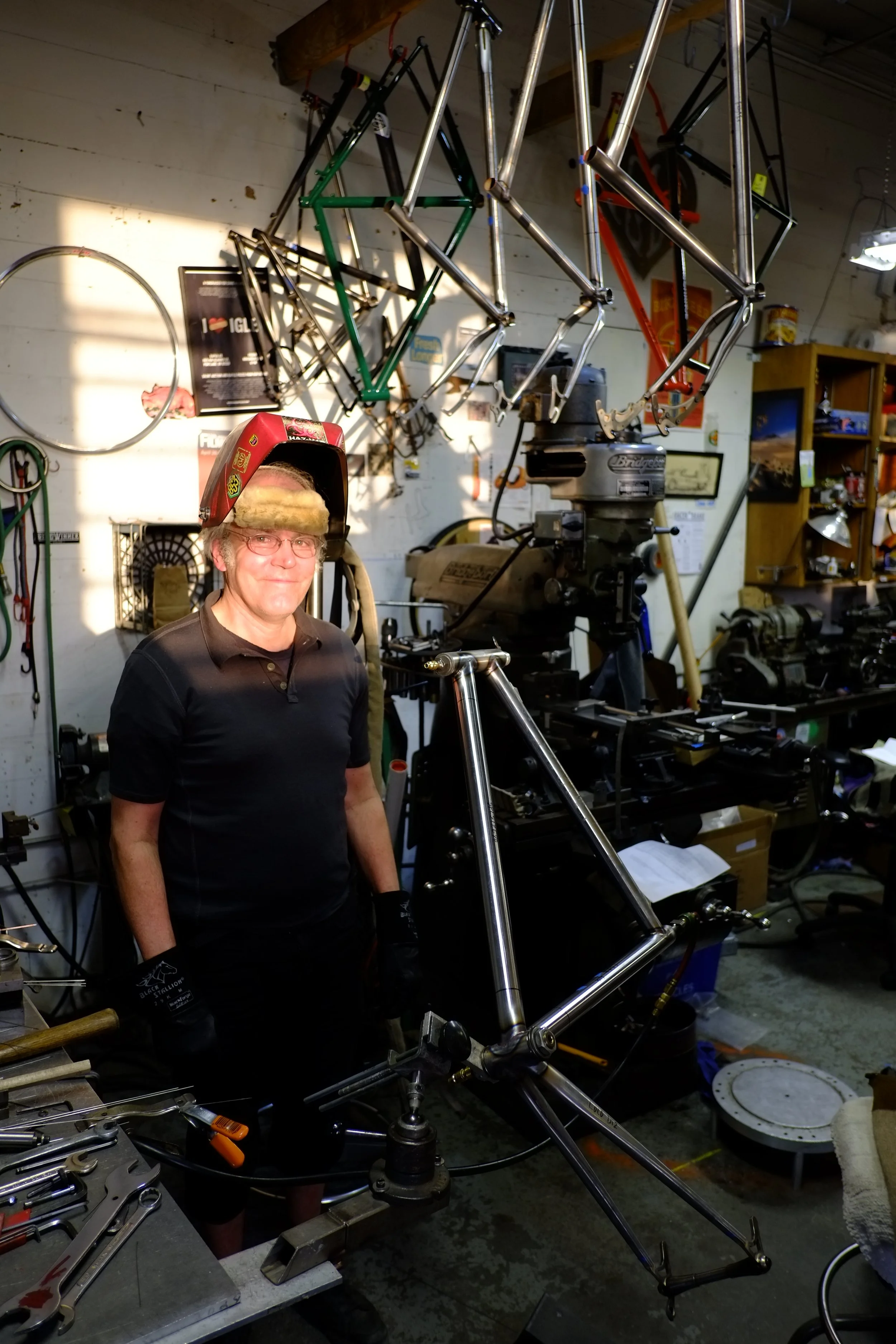
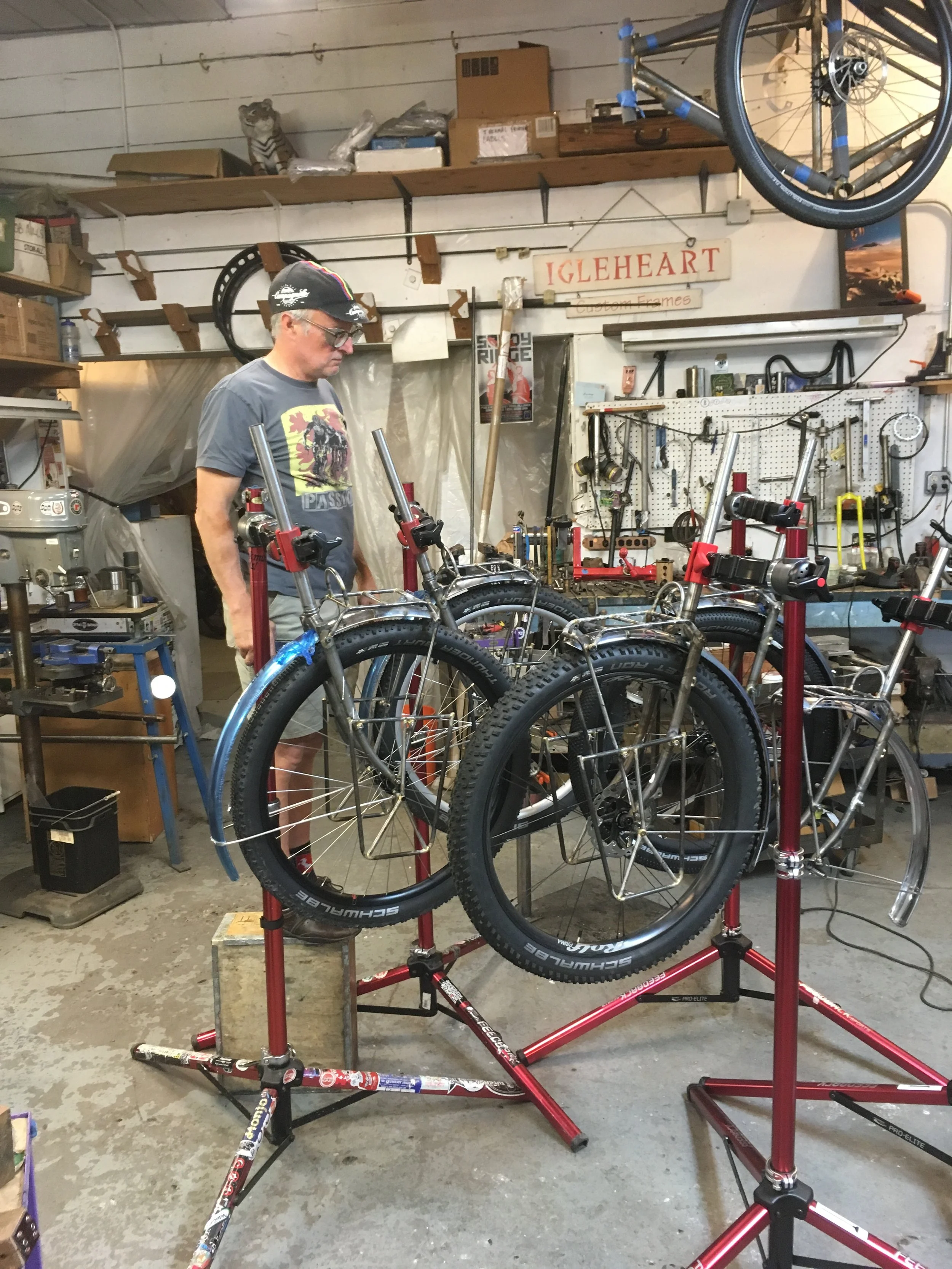
The Page Street workshop has been exceptionally good to me. When I moved in, my business was a mere toddler. Rent was cheap and the space plentiful. This allowed my business to grow, for me to keep practicing the craft of bike making without being overly haunted by financial stress. In a practical sense low overhead was key. More subtly, though, I learned how important, how vital, the community around me has been. This has everything to do with my general sanity and well-being. The shop mates whose company I shared for years — Tall Jay, Mitch of MAP Bikes, and for over a decade, until his retirement, my good buddy Christopher Igleheart — these people feel like family to me. Not to mention the folks next door, Bradley and Archie and all the rad people at Metropolis Cycles, and the amazing and creative women working with Mary Carroll Ceramics. Also, my friends at Sugar Wheel Works, and the recently transformed Breadwinner Cycles.
The community expands further, to all the neighboring businesses, both bike-related and not: the cabinet shop, the print shop, the packaging warehouse, hardware store, coffee shops, the bank, the post, and so on. Moving away from all this great company is something that gives me serious pause. When thinking about how much this is going to change things for me I become verklempt. But all the same I know the time has come, and I am ready.
Building a home shop
So to Newport, and making a home shop. It’s been gratifying considering what tools I want to bring, the reduced space forcing me to pare down to the essentials, mapping the footprint of each cart, bench, vice and machine tool, deciding what goes where. There’s an empty 100 amp electrical panel just waiting. Once each tool finds its place I’ll run power, embed lights in the ceiling, fill in the blanks with workbenches and shelves, bolt work stands to the concrete floor, and so on. I have to think about work flow, what makes the most sense, how to arrange things like a Swiss Army knife rather than the whole bank of cutlery.
Gratitude is the best medicine
When I first started building bikes I was in North Portland, not far from Ainsworth and N Greeley. This feels like a hundred years ago. I didn’t comprehend how fortunate I was, how the stars were aligning, until hindsight came along.
I rented an upstairs bedroom in my friend William’s house and, after taking a class with Tim Paterek and buying his frame building equipment, I set up shop in the garage. Talk about low overhead, I gave William an extra $50 a month for the space. I built a workbench, mounted a vice to it and got started. I didn’t have more than the most basic tools and shared the garage with a wood pile, a push mower, bags of potting soil, and some bent up wire tomato cages. I had maybe 100 square feet to work in, and at the time that was just fine.
It was a detached one-car garage, the walls weren’t insulated and there was no heater. I had a bare-bulb overhead light and a single outlet with two plugs. The only electric tools I owned were a drill, a die grinder, and a 1960s era bench grinder. I cut and mitered tubes by hand, bled a little on every frame and told myself it was good voodoo. And maybe it was, who knows? I sucked at it, but oh my how I wanted to learn. I didn’t know anything about business and didn’t really care, I just wanted to make stuff with tools and fire. I had a job at River City Bikes that paid my rent, and it was enough for me at the time. I loved bikes and found a way to engage with them that was more than just riding. For me it changed everything. It’s hard to believe I’m still doing this crazy job, still making things with these two hands, and even better, still enjoying myself.
Deep Archeological History
It’s true to say the end of the Page Street workshop is the end of an era. Right now, to me, it feels monumental and kind of scary. But I know you have to close one door to be able to open the next, and it reminds me there is a larger story happening. This excites me because I realize I’m not yet to the end of the book. I’m just turning a page, starting a new chapter.
So many good things are coming, I can hardly wait.
At the door
Things you need to know, in summary:
— September 1st I’m moving out of the Page Street workshop — me and my tools are heading to the Oregon Coast to live in Newport, near a lighthouse.
— Ahearne Cycles and Page Street Cycles will continue more or less as they have for the past many years. If anything, being in a well considered home workshop, under reduced stress, the bikes that come out of it will be better than ever.
— There may be some delays before I’m fully up and running again, but it shouldn’t be more than a few months. Targeting the end of this year. My current wait time for a bike is (including the move) about 16-18 months.
— I will still be in and out of Portland fairly regularly, and can set appointments to meet with people who are already on the list or interested in getting a bike. We can talk about design, parts, figure out sizing, etc. Much of this can be done over the computer as well. Contact me with questions.
— I currently have bikes for sale that I won’t have space for when I move. Please get in touch if there’s anything you’re interested in. The prices are not set in stone — all reasonable offers will be considered.
— I’ll be at the Made PDX bike show, which runs August 23-25. Please come say hi.
Standing On a Beach

